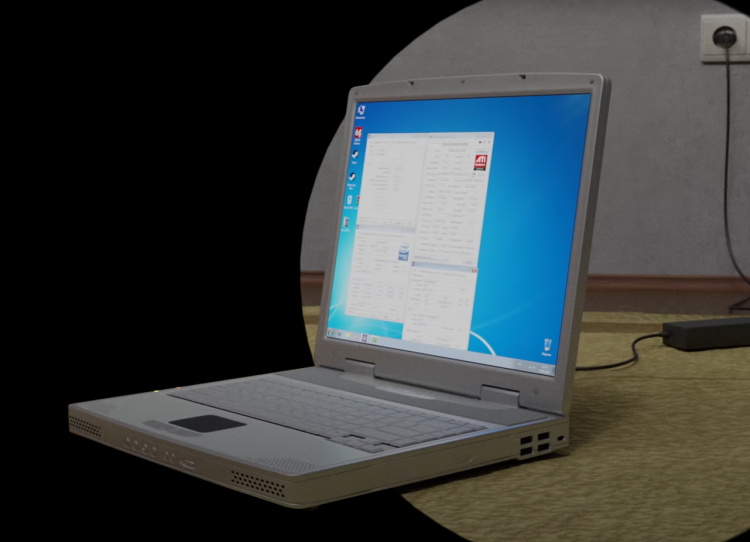Half-Life Modder Makes Half-Life 2 Map Work in GoldSrc and Runs It on a 2002 Laptop
In a showcase of technical creativity and efficient design, modder and YouTuber Goonya’s Animations managed to recreate a map originally built for Half-Life 2 inside the older Half-Life GoldSrc engine, maintaining nearly the same visual quality while achieving smooth performance on a 23-year-old laptop. The project, revealed in a video titled This is GoldSrc, highlights the striking gap between the elegance of older game engines and the resource-hungry nature of many modern PC releases.
The video begins with a demonstration of the Half-Life 2 version of the map, still in development. It includes multiple industrial corridors, a room lined with computer terminals and illuminated displays, and tiled floors with phong-shaded reflections—visual effects typical of the Source engine’s mid-2000s lighting style. Goonya explains that they used Half-Life 2’s standard assets and processed the lighting through Blender to bake it directly onto the models. The entire map reportedly relies on “two 2048x2048 DXT1 unlit textures” with a total file size of only 4MB.
When the video transitions to the same environment running on Half-Life’s GoldSrc engine, the visual differences are surprisingly minor. The low-poly crowbar visible in the player’s hand immediately identifies the engine swap, but otherwise, the overall look remains consistent. Phong reflections are gone, and dynamic screens have been replaced with static images. Still, the map retains its dense shadows, warm lighting, and detailed props. Goonya notes that “due to GoldSrc limitations, all of 2K atlases were split into lots of 512x512 textures.”
Apart from those adjustments, the recreated map appears nearly identical to the Half-Life 2 version. The demonstration highlights just how much visual fidelity can be maintained when using traditional lighting and static texture work instead of modern rendering techniques like ray tracing.
Have you heard about HLX? There might be Half-Life 3 in development. Read more about leaks in our previous HL update.
Goonya then performs a test that pushes the concept even further. They load the map on a Pentium 4 laptop from 2002, using one of the earliest Half-Life builds still compatible with Windows XP. Despite the age of the system, the map runs between 30 and 60 frames per second—on hardware that would have been obsolete even when Half-Life 2 launched in 2004. The test serves as an understated challenge to modern gaming’s ongoing struggle with optimization.
Online reactions to the project emphasize that point. “The fact that those graphics run so well on such an old and bad computer really shows that modern games need better optimisation,” wrote YouTube user DotMeister under the video. Others, like user statejic1020, added perspective by noting that Half-Life and Half-Life 2 are far less complex than today’s large-scale titles, with fewer systems running under the surface.
Still, the mod’s achievement taps into a broader conversation happening across the industry. Many contemporary PC games have faced criticism for poor performance at launch, even on high-end hardware. Titles such as Star Wars Jedi: Survivor and Borderlands 4 have been singled out for demanding massive system resources despite only marginal improvements in visual fidelity.

The discussion echoes sentiments from developers who have started prioritizing optimization over visual extravagance. During previews for Battlefield 6, EA’s technical director Christian Buhl stated that the team aimed for the game to be “performant without a lot of extra stuff.” The decision to avoid mandatory ray tracing and DLSS support resulted in a game that maintained high frame rates across a wider range of systems.
Goonya’s experiment aligns with that philosophy, illustrating that thoughtful lighting and efficient texture management can still deliver striking visuals without modern graphical overhead. The demonstration effectively turns an old laptop into a platform for modern-looking gameplay, built entirely on 1990s engine technology.
The broader reaction across the modding and PC gaming community reflects a mix of admiration and curiosity. While few expect studios to return to the technical limitations of GoldSrc, projects like This is GoldSrc highlight a principle that remains relevant—performance and visual quality don’t need to exist in opposition. The Half-Life modder’s work stands as a rare reminder that with careful design, even the oldest tools can still produce results that rival contemporary releases.

Comments